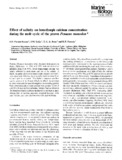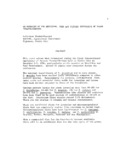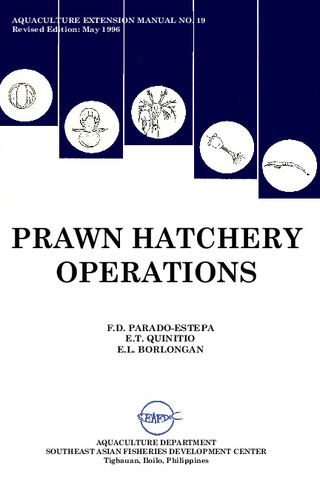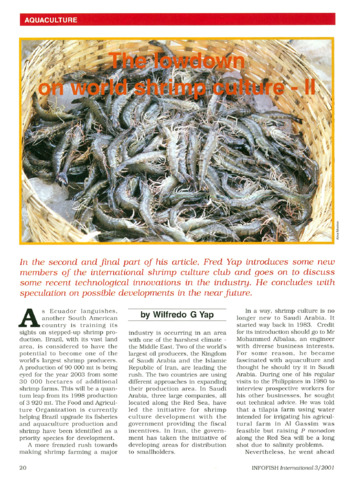Effect of salinity on hemolymph calcium concentration during the molt cycle of the prawn Penaeus monodon
Share
Abstract
Prawns (Penaeus monodon) were obtained from ponds in Iloilo, Philippines, in 1984 and 1985 and maintained in salinities from 8 to 44‰. Total hemolymph calcium was largely affected by molt stage and less so by salinity. A sharp, transient increase in hemolymph calcium occurred 3 to 6 h postmolt, followed by an equally rapid decrease from 6 h postmolt to intermolt. This biphasis response was limited to prawns in 8, 20 and 32‰S; in 44‰S, hemolymph calcium remained the same throughout the sampling period. Peak concentrations of total calcium were greater in low (8 and 20‰S) than in high salinities. Salinity had no effect on the duration of molt cycle nor on time of occurrence of molt. Almost half of molting incidents occurred between 18.01 and 0.00 hrs, and one-third between 0.01 and 06.00 hrs.
Suggested Citation
Parado-Estepa, F. D., Ladja, J. M., de Jesus, E. G., & Ferraris, R. P. (1989). Effect of salinity on hemolymph calcium concentration during the molt cycle of the prawn Penaeus monodon. Marine Biology , 102(2), 189-193. https://doi.org/10.1007/BF00428279
Subject
Taxonomic term
Collections
- AQD Journal Articles [1248]
Related items
Showing items related by title, author, creator and subject.
-
An overview of the nutrition, feed and feeding techniques of prawn penaeid/shrimps
Piedad-Pascual, Felicitas (Philippine Council for Aquatic and Marine Research and Development, 1989)This paper echoes what transpired during the first International Conference of Penaeid Prawns/Shrimps held in Iloilo City in December 4-7, 1984, particularly on the Nutrition nd Feed Development. Around 25 papers were ... -
Prawn hatchery operations
Parado-Estepa, Fe D.; Quinitio, Emilia T.; Borlongan, Emeterio L. (Aquaculture Department, Southeast Asian Fisheries Development Center, 1996-05)The manual, an updated version of the 1984 SEAFDEC/AQD manual, presents the underlying principles and step-by-step instructions of prawn larval and post-larval rearing. The techniques described are not only applicable to ... -
The lowdown on world shrimp culture - II
Yap, Wilfredo G. (INFOFISH, 2001)This paper introduces some new members of the international shrimp culture club and goes on to discuss some recent technological innovations in the industry, particularly the polyculture of tilapia (mainly Oreochromis ...




